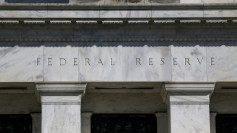In an unexpected turn that underscores the resilience of the U.S. labor market, the number of Americans filing for unemployment benefits has dropped to its lowest level in five weeks. This decline comes despite recent high-profile layoffs across various sectors, signaling a robust economic environment that continues to defy Federal Reserve expectations.
For the week ending February 17, applications for jobless benefits decreased by 12,000 to 201,000, according to the Labor Department. This reduction in claims, coupled with a decrease in the less volatile four-week average to 215,250, suggests that layoffs remain remarkably low in the current economic landscape.
This enduring strength in the job market has been particularly noteworthy given the Federal Reserve's aggressive interest rate hikes initiated in March 2022, aimed at tempering inflation. Contrary to many economists' predictions that these hikes would weaken the labor market and potentially induce a recession, employment opportunities have continued to flourish, bolstered by robust consumer spending.
January saw a remarkable surge in hiring, with U.S. employers adding 353,000 jobs, significantly surpassing economists' forecasts and marking a strong start to 2024. This hiring spree has maintained the unemployment rate at a historically low 3.7% for two full years, the longest streak since the 1960s.
Despite the overall low level of layoffs, recent months have seen an uptick in job cuts, particularly in the technology and media sectors. Companies such as Google's Alphabet, eBay, TikTok, Snap, and the Los Angeles Times have all announced workforce reductions. Other industries, including logistics and retail with companies like UPS, Macy's, and Levi's, have also made cuts.
As of February 10, approximately 1.86 million Americans were receiving jobless benefits, reflecting a drop of 27,000 from the week prior. This trend of declining jobless claims has been consistent, even amidst high-profile layoffs at the year's outset.
The resilience of the job market, as demonstrated by these low unemployment claims, suggests a continued tight labor market that may exert upward pressure on wages, potentially delaying any moves by the Federal Reserve to reduce interest rates. According to Christopher Rupkey, chief economist at FWDBONDS in New York, "Job layoffs remain minimal so wage pressures from a tight labor market will continue to push off the day when Fed officials can safely lower interest rates without reigniting inflation."
This labor market strength is seen as reducing the urgency for the Federal Reserve to commence interest rate cuts, with the central bank's policymakers expressing concerns over the risks of premature rate reductions. The job market's durability is evident in sectors such as California, Illinois, Kentucky, Michigan, New York, and Texas, where applications for unemployment benefits have notably decreased.
While the Fed has maintained interest rates at their current level in its last four meetings, the labor market's ongoing robustness, highlighted by these recent jobless claims figures, presents a complex backdrop for monetary policy decisions. As the U.S. economy continues to navigate through these uncertain times, the strength of the labor market remains a key indicator of its overall health and resilience.






